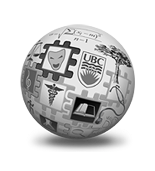Course:FRE505
| FRE 505: Agricultural and Resource Policy Analysis
- Policy and Project Evaluation | |
|---|---|
 | |
| FRE 505 | |
| Section: | |
| Instructor: | Dr. Richard Barichello |
| Email: | rick.barichello@ubc.ca
Phone: (604) 822-3473 |
| Office: | 339 MacMillan |
| Office Hours: | TBA |
| Class Schedule: | Feb 23 to April 10
Tuesdays & Thursdays 1:00- 2:30 PM |
| Classroom: | MCML 154 |
| Important Course Pages | |
| Syllabus | |
| Lecture Notes | |
| Assignments | |
| Course Discussion | |
COURSE DESCRIPTION
This course provides students with practical tools used globally to evaluate policies and investment projects in the food and resource sectors. Students learn three core analytical tools: Policy Analysis Matrix (PAM) and Domestic Resource Cost (DRC) for policy evaluation, and Cost-Benefit Analysis (CBA) for investment project appraisal. Through these tools, students assess both private and social (economic) profitability, understand policy distortions, and learn how factor markets of land, labour, and capital shape outcomes. The topic of agricultural productivity measurement is also introduced.
Practical cases include PAM application to rice production in Thailand, effects of currency devaluation, and labour, land, and capital market costs and using CBA to evaluate major investment projects such as Buenos Aires–Colonia Bridge Project, rubber replanting programs, community pasture systems in British Columbia, Ethiopian honey value-chain investments, and Vietnamese electricity infrastructure. These cases help students understand how data, institutions, and context influence policy outcomes and investment decisions.
LEARNING OUTCOMES
By the end of the course students will be able to:
- Master the concepts in the core analytical tools of PAM, Total Factor Productivity and CBA.
- Understand the type of data required for each analytical tool.
- Identify key elements of local factor markets in order to collect appropriate data.
- Apply the PAM (Including DRC) and CBA in real life cases with real-world data.
- Outline common difficulties or barriers to obtaining high quality data, and develop ways to overcome them.
- Identify measures of agricultural sector productivity, particularly Total Factor Productivity, and the steps and challenges in measuring the latter.
ASSESSMENT REPORT
The policy brief will be a 1-page summary of the results of PAM and CBA analyses/problem sets or policy options of your choice. They will provide practice in communicating results of your analyses to help policy makers understand your analysis and then choose better policies.
REAL-WORLD APPLICATIONS IN CLIMATE, FOOD & ENVIRONMENT
- How can we evaluate government policies, such as within the food sector, to see if they increase national incomes, incomes of farmers, incomes of consumers, or incomes of other firms like processors, and reduce wasteful or inefficient outcomes?
- How do these evaluation results change when we include externalities such as environmental damages or government policy/regulatory distortions?
- How can we choose the investment projects from national government funds or foreign aid funds that maximize the increase to national incomes, and to the incomes of important sub-groups like farmers, poor families, and other groups that are otherwise disadvantaged (e.g., women, aboriginal populations) and also reduce corrupt and wasteful investment expenditures?
ASSESSMENT METHODS
Your grade shall be determined as follows
| Requirements | Date | Percent of Grade |
|---|---|---|
| Problem sets (2): 7%, 15% | (1) after Lec7; (2) after Lec8 | 22% |
| Class Quizzes (2) @ 7% | (1) Near Lec5; (2) near Lec6 | 14% |
| Final Exam | TBD | 50% |
| Policy Brief (1) | Feb 16 | 14% |